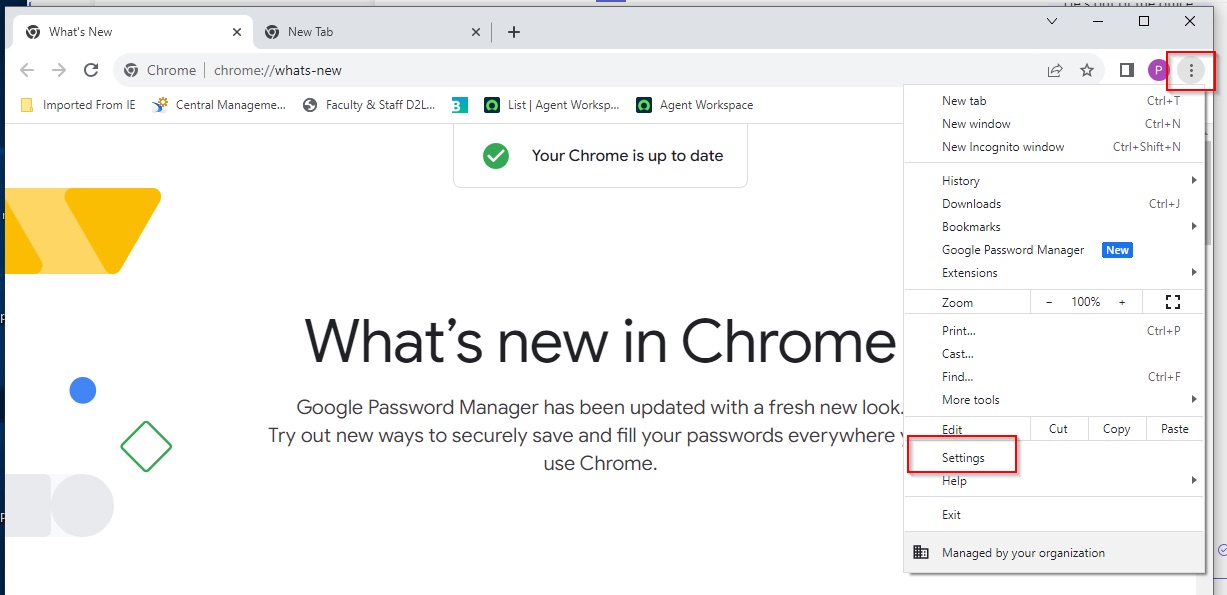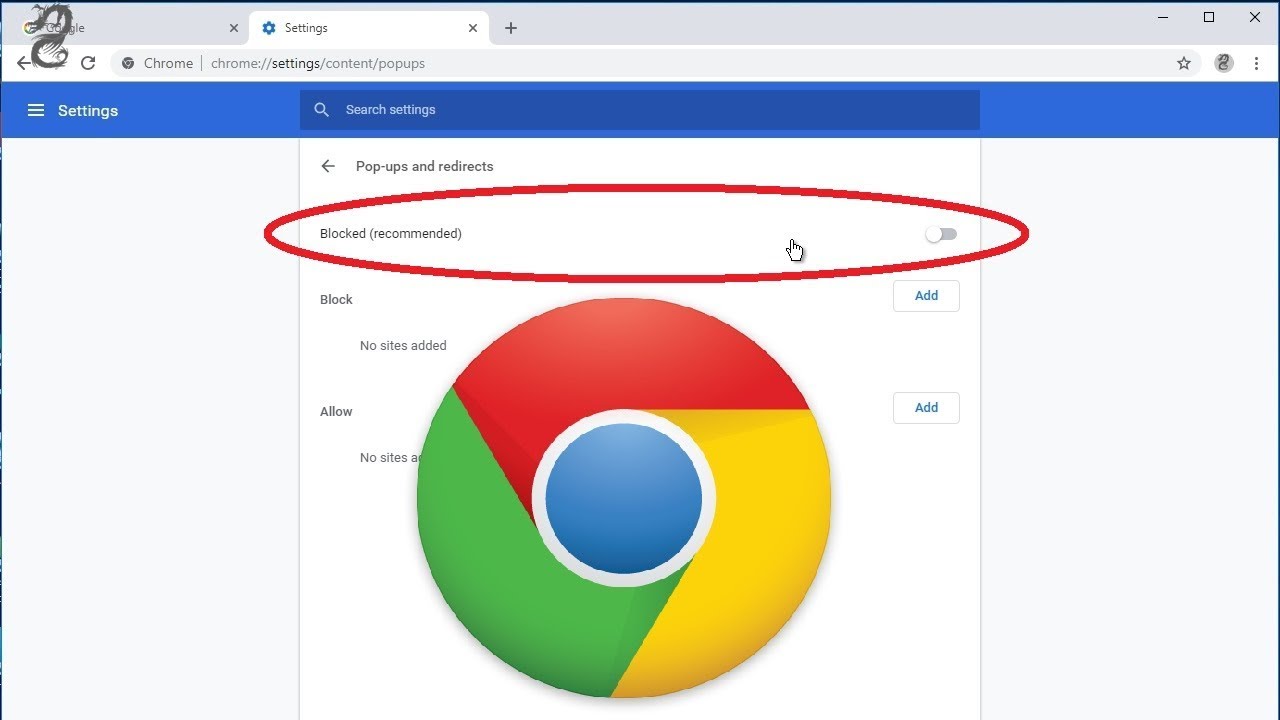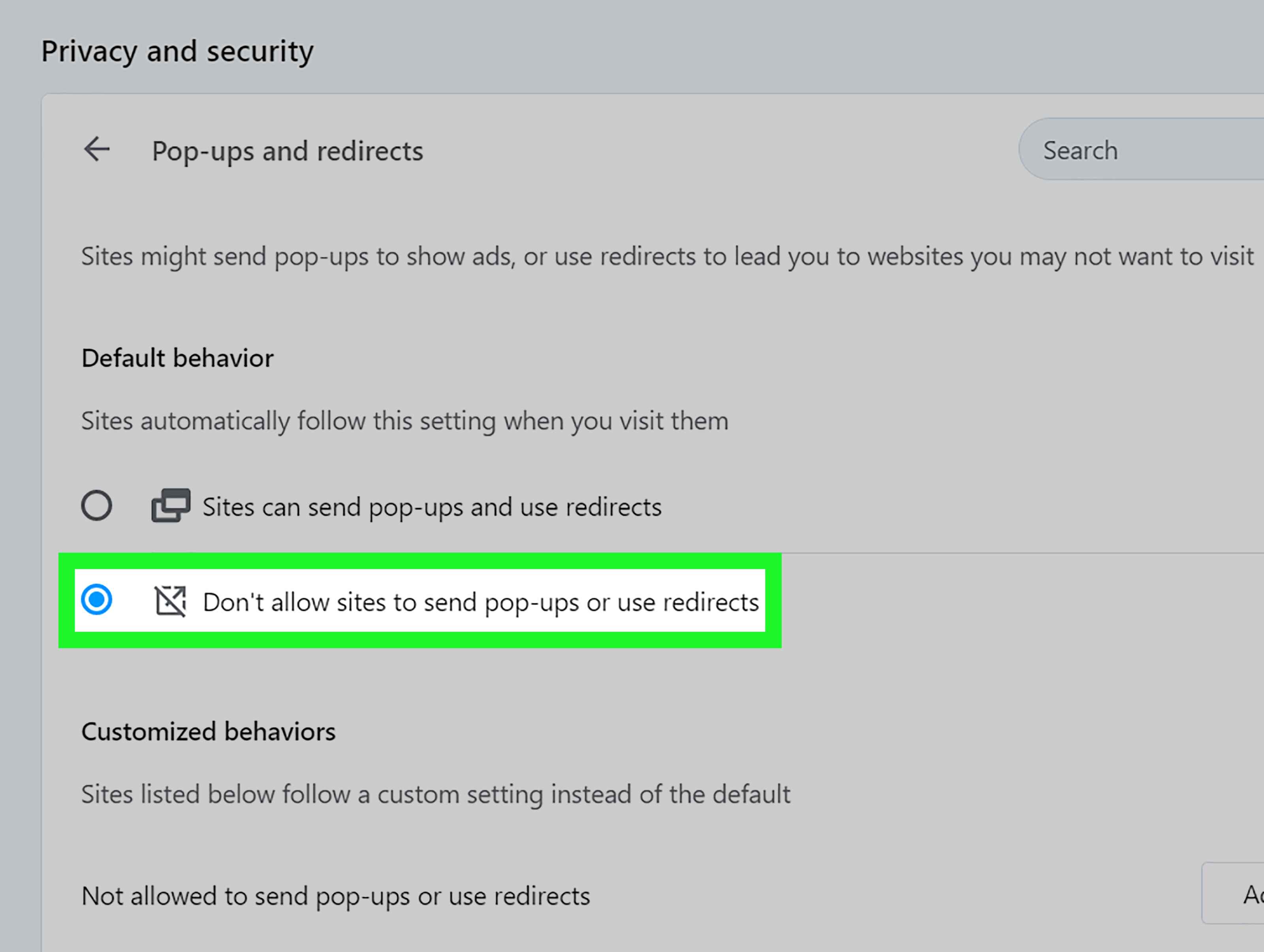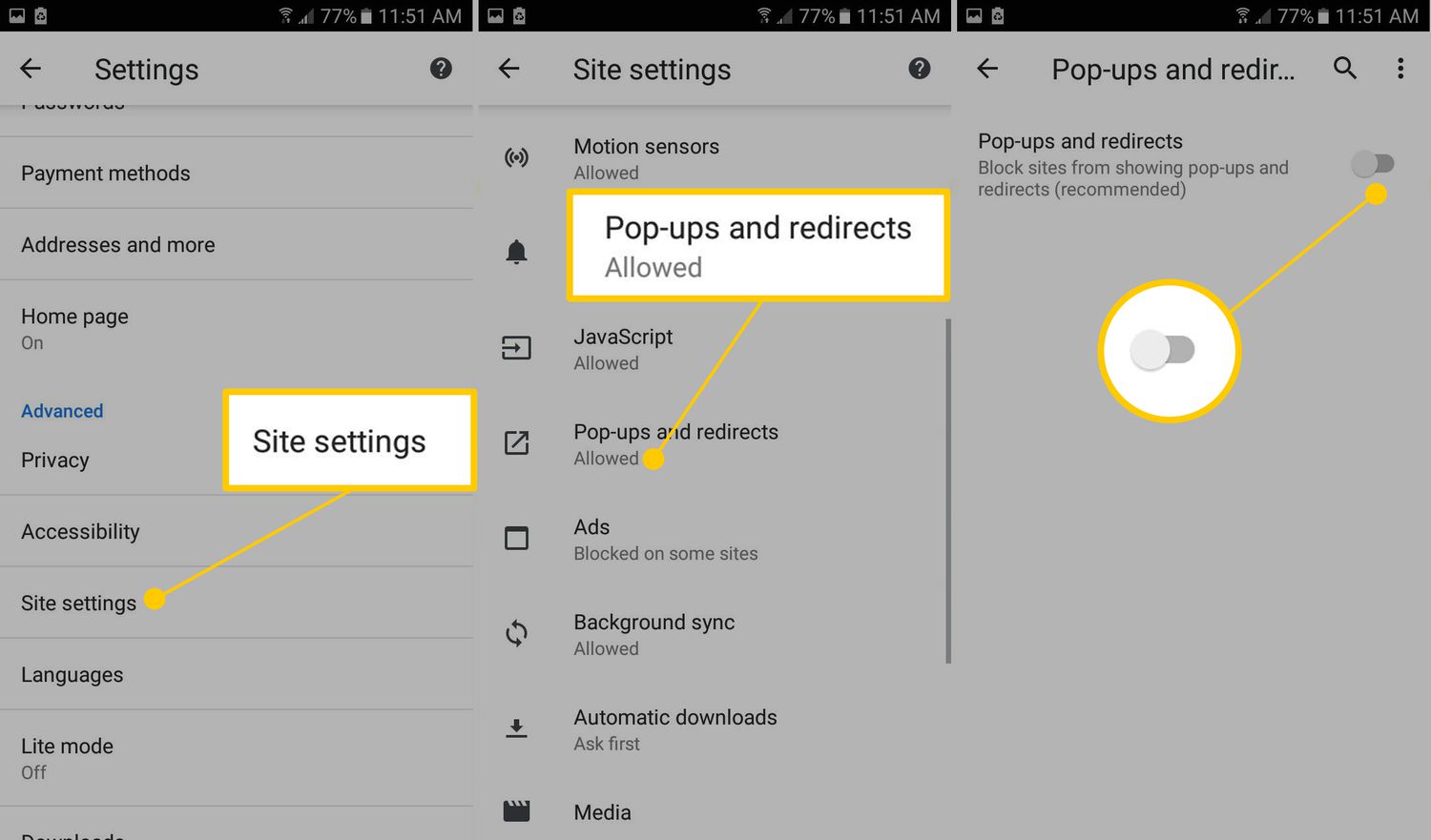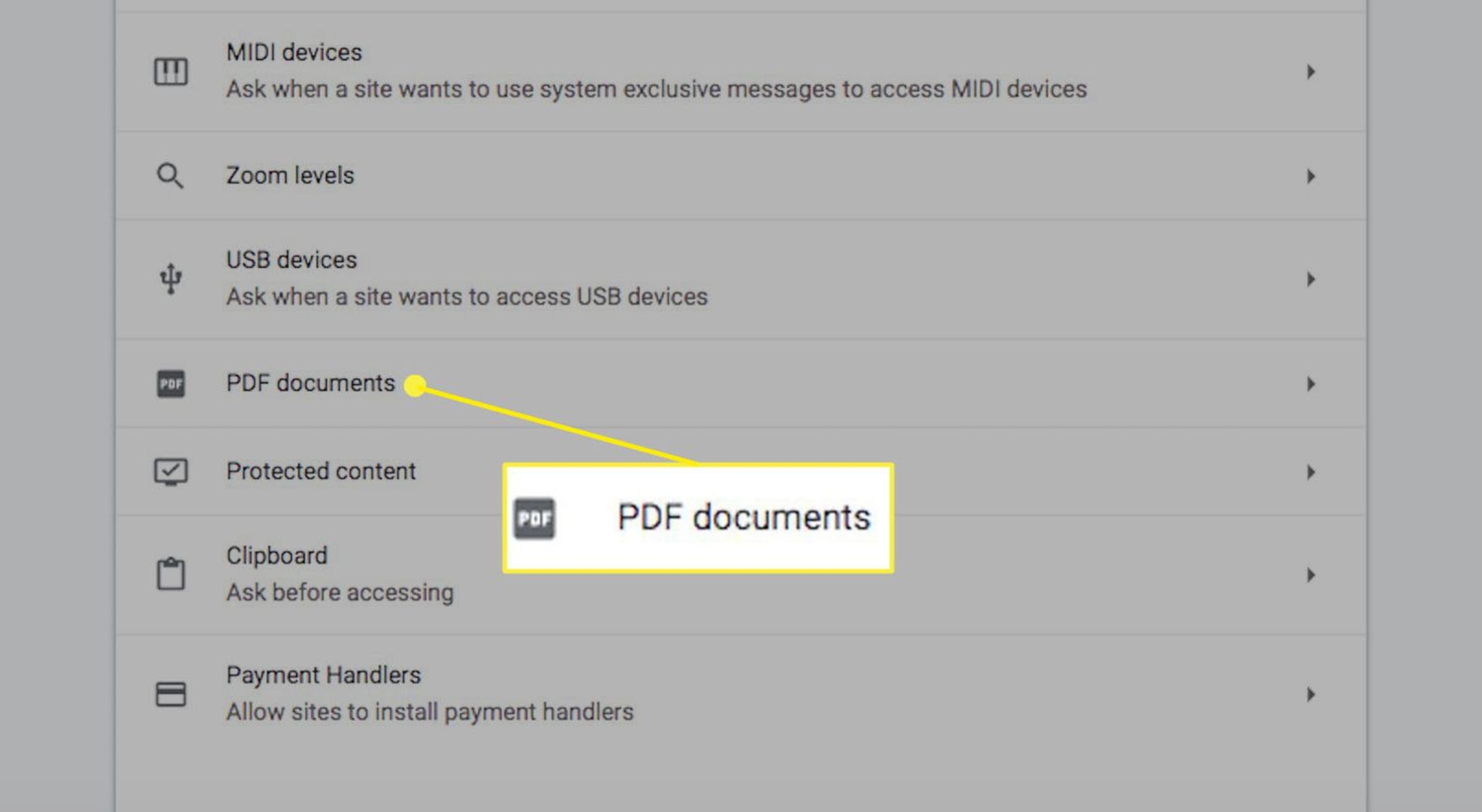Introduction
Redirects in web browsers can be a frustrating experience for users. Imagine this: you're browsing the web, clicking on a link that seems promising, and suddenly, you find yourself on a completely different website that you didn't intend to visit. This unexpected detour is known as a redirect, and it can disrupt your online experience, compromise your privacy, and even expose your device to potential security risks.
In this article, we will delve into the world of redirects in the context of Google Chrome, one of the most popular web browsers globally. We'll explore the underlying causes of redirects, the potential risks they pose, and most importantly, how to effectively prevent them from hijacking your browsing sessions.
Whether you're a casual internet user or a seasoned web surfer, understanding redirects and learning how to combat them is crucial for a smooth and secure online experience. So, let's embark on this journey to uncover the mysteries of redirects and equip ourselves with the knowledge and tools to navigate the web without unwelcome detours.
Understanding Redirects in Chrome
In the realm of web browsing, a redirect refers to the process of a web page sending a user to a different URL from the one they initially requested. This can occur for various reasons, some legitimate and others malicious. Understanding how redirects function within the Chrome browser is essential for effectively managing and preventing unwanted redirections.
Types of Redirects
Chrome handles different types of redirects, including 301 and 302 redirects. A 301 redirect signifies that a web page has been permanently moved to a new location, while a 302 redirect indicates a temporary move. These redirects are commonly used by website administrators to ensure that users are directed to the most relevant and up-to-date content.
User-Initiated Redirects
Sometimes, redirects are intentionally triggered by users. For instance, when clicking on a link or submitting a form, the browser may be instructed to redirect to a different page. While these redirects are typically harmless and serve legitimate purposes, they can still lead to unexpected destinations if not carefully managed.
Malicious Redirects
On the darker side of the web, malicious actors may employ redirects to lure unsuspecting users to fraudulent websites or phishing pages. These deceptive tactics can compromise user privacy, expose sensitive information, or even distribute malware. Chrome's robust security features play a crucial role in identifying and mitigating such malicious redirects to safeguard users from potential harm.
Impact on User Experience
Redirects can significantly disrupt the browsing experience. They can lead to confusion, frustration, and a loss of trust in the websites being visited. Moreover, frequent redirects can slow down browsing sessions and hinder the seamless navigation of the web.
Browser Behavior
Chrome's handling of redirects is designed to balance user convenience with security. The browser employs various mechanisms to ensure that redirects are managed transparently and securely, providing users with a seamless browsing experience while mitigating potential risks associated with malicious redirections.
By comprehending the intricacies of redirects within the Chrome browser, users can better equip themselves to identify and address unwanted redirections effectively. This understanding serves as a foundation for implementing strategies to prevent and mitigate the impact of redirects on the browsing experience.
Common Causes of Redirects
Redirects can occur due to a variety of reasons, ranging from legitimate website behaviors to more nefarious activities. Understanding the common causes of redirects is essential for effectively addressing and preventing them. Here are some prevalent factors that contribute to redirects in the Chrome browser:
1. Website Redirection Policies
Many websites implement redirection policies to ensure that users are directed to the most relevant and updated content. For instance, when a web page undergoes a structural change or is moved to a new URL, website administrators may employ 301 redirects to seamlessly guide users to the new location. While these redirects serve a legitimate purpose, they can sometimes lead to unexpected detours for users.
2. Clickbait and Advertisements
Clickbait links and aggressive advertisements can trigger redirects when clicked, leading users to unintended destinations. Some websites employ deceptive tactics to entice users to click on sensationalized headlines or misleading advertisements, which can result in unexpected redirections to unrelated or potentially harmful websites.
3. Malicious Scripts and Exploits
Malicious scripts embedded within websites or distributed through compromised advertisements can initiate unauthorized redirects. These scripts may exploit vulnerabilities in the browser or its extensions to redirect users to malicious websites, potentially exposing them to phishing attempts, malware, or other security threats.
4. Browser Extensions and Add-ons
Certain browser extensions and add-ons, if compromised or poorly designed, can manipulate browsing sessions and trigger unwanted redirects. Malicious or poorly coded extensions may inject unauthorized scripts into web pages, leading to unexpected redirections or altering the intended behavior of websites.
5. Unintentional User Actions
In some cases, users may inadvertently trigger redirects through unintentional actions such as mistyped URLs, accidental clicks on misleading elements, or interactions with deceptive website elements. These unintentional actions can lead to unexpected redirections, disrupting the intended browsing experience.
By recognizing these common causes of redirects, users can proactively take measures to mitigate their impact and prevent unwelcome detours during their browsing sessions. Addressing these underlying factors empowers users to navigate the web with greater confidence and security, minimizing the disruptions caused by redirects in the Chrome browser.
How to Stop Redirects in Chrome
Unwanted redirects can disrupt the browsing experience and pose potential security risks. Fortunately, there are several effective strategies to prevent and stop redirects in the Chrome browser. By implementing the following measures, users can regain control over their browsing sessions and mitigate the impact of unwelcome redirections.
Using Chrome Extensions to Block Redirects
Chrome offers a wide array of extensions specifically designed to block and manage redirects. These extensions leverage advanced algorithms to detect and intercept unauthorized redirection attempts, effectively safeguarding users from deceptive and malicious redirects. Popular extensions such as "uBlock Origin" and "AdBlock Plus" not only block intrusive advertisements but also prevent clickbait links and other sources of unwanted redirects. By installing reputable redirect-blocking extensions from the Chrome Web Store, users can fortify their browser against a wide range of redirection attempts.
Clearing Browser Data and Cookies
Outdated or corrupted browser data and cookies can inadvertently contribute to unwanted redirects. Clearing browsing history, cache, and cookies can help eliminate potential triggers for redirects, ensuring a cleaner and more stable browsing environment. By regularly clearing browser data, users can minimize the likelihood of encountering redirects stemming from outdated or compromised local data stored within the browser.
Updating Chrome and Operating System
Keeping Chrome and the underlying operating system up to date is crucial for addressing security vulnerabilities and mitigating the risk of redirects. Regular updates not only introduce new features and performance enhancements but also patch known security flaws that could be exploited by malicious actors to initiate redirects. By staying current with the latest browser and system updates, users can benefit from improved security measures that help prevent unauthorized redirections.
Checking for Malware and Unwanted Programs
Malware and unwanted programs can manipulate browser behavior and trigger unauthorized redirects. Performing regular scans with reputable antivirus and anti-malware software can help identify and remove potentially harmful entities that may be causing redirects. Additionally, Chrome's built-in security features, such as Safe Browsing, can proactively warn users about suspicious websites and potential threats, further bolstering the browser's defenses against malicious redirection attempts.
By implementing these proactive measures, users can effectively stop redirects in Chrome and enhance their browsing security and stability. These strategies empower users to take control of their online experience, mitigating the disruptions and potential risks associated with unwanted redirections.
Using Chrome Extensions to Block Redirects
When it comes to combating unwanted redirects in the Chrome browser, leveraging specialized extensions can be a game-changer. Chrome's extensive library of extensions includes powerful tools designed to intercept and block unauthorized redirection attempts, providing users with a more secure and streamlined browsing experience.
One of the most popular and effective categories of Chrome extensions for redirect management is ad blockers. These extensions not only combat intrusive advertisements but also serve as robust shields against clickbait links, deceptive pop-ups, and other sources of unwanted redirects. Among the standout options, "uBlock Origin" and "AdBlock Plus" have garnered widespread acclaim for their ability to not only enhance browsing speed by blocking resource-intensive ads but also prevent users from being redirected to dubious or potentially harmful websites.
These redirect-blocking extensions employ sophisticated algorithms to analyze web page elements and intercept redirection triggers, effectively safeguarding users from deceptive and malicious redirects. By systematically identifying and neutralizing potential redirection attempts, these extensions bolster the browser's defenses, providing users with greater control over their online interactions.
Moreover, reputable redirect-blocking extensions available through the Chrome Web Store undergo rigorous scrutiny to ensure compliance with Chrome's security and performance standards. This vetting process helps users identify trustworthy extensions that prioritize both effectiveness and user privacy, offering peace of mind when integrating these tools into their browsing environment.
By installing and configuring reputable redirect-blocking extensions, users can fortify their browsing sessions against a wide range of redirection attempts, from clickbait links to aggressive advertisements. These extensions not only enhance browsing security but also contribute to a more seamless and distraction-free online experience, empowering users to navigate the web with confidence and peace of mind.
In essence, leveraging Chrome extensions tailored to block redirects represents a proactive and effective approach to fortifying the browser against unwelcome redirection attempts. By integrating these specialized tools into their browsing environment, users can mitigate the impact of unwanted redirects and reclaim control over their online interactions, fostering a safer and more enjoyable browsing experience.
Clearing Browser Data and Cookies
Clearing browser data and cookies is a fundamental practice for maintaining a clean and stable browsing environment while mitigating the potential triggers for unwanted redirects in the Chrome browser. Browser data, including browsing history, cached files, and cookies, can accumulate over time, potentially leading to conflicts or unintended redirection triggers. By regularly clearing this data, users can effectively minimize the likelihood of encountering redirects stemming from outdated or compromised local data stored within the browser.
When users visit websites, their browsers store various types of data to enhance the browsing experience. This includes cookies, which are small pieces of data generated by websites and stored on the user's device. While cookies serve legitimate purposes such as maintaining user preferences and session information, they can also be exploited by websites to track user behavior or initiate redirections based on stored data.
Clearing browsing history, cache, and cookies can help eliminate potential triggers for redirects, ensuring a cleaner and more stable browsing environment. By removing outdated or corrupted data, users can reduce the risk of encountering redirects caused by conflicting or compromised local data stored within the browser. Additionally, clearing cookies can reset user identifiers and session data, potentially disrupting the mechanisms used by websites to initiate unauthorized redirections.
To clear browser data and cookies in Chrome, users can access the browser's settings and navigate to the "Clear browsing data" or "Privacy and security" section. From there, they can select the types of data to clear, including browsing history, cookies, cached images and files, and other site data. By customizing the data clearing options based on their preferences, users can effectively reset their browsing environment, minimizing the impact of outdated or potentially problematic data on their browsing sessions.
In essence, regularly clearing browser data and cookies is a proactive measure that empowers users to maintain a cleaner and more stable browsing environment while reducing the likelihood of encountering unwanted redirects. By incorporating this practice into their browsing routine, users can enhance their browsing security and stability, fostering a more seamless and uninterrupted online experience.
Updating Chrome and Operating System
Keeping Chrome and the underlying operating system up to date is crucial for addressing security vulnerabilities and mitigating the risk of redirects. Regular updates not only introduce new features and performance enhancements but also patch known security flaws that could be exploited by malicious actors to initiate redirects.
Chrome, being a widely used web browser, is a prime target for cyber threats. Vulnerabilities in the browser's code can be exploited by malicious entities to manipulate browsing sessions and trigger unauthorized redirects. By promptly installing Chrome updates, users benefit from the latest security patches and bug fixes, strengthening the browser's defenses against potential redirection attempts.
In addition to Chrome updates, maintaining the operating system's overall security is equally vital. Operating system updates, whether it's Windows, macOS, or Linux, often include critical security patches that address vulnerabilities at the system level. These vulnerabilities, if left unaddressed, can be leveraged to compromise the browser's integrity and facilitate unauthorized redirections.
By staying current with the latest browser and system updates, users can benefit from improved security measures that help prevent unauthorized redirections. Furthermore, these updates often include performance optimizations, bug fixes, and compatibility enhancements, contributing to a smoother and more secure browsing experience.
To ensure that Chrome and the operating system are up to date, users can enable automatic updates for both the browser and the system. Chrome's automatic update feature ensures that users receive the latest security patches and feature upgrades without manual intervention. Similarly, operating systems offer options to automatically download and install updates, providing users with a hassle-free approach to maintaining the overall security and stability of their devices.
In essence, updating Chrome and the operating system is a proactive measure that significantly reduces the risk of encountering unwanted redirects. By embracing a proactive approach to software maintenance, users can fortify their browsing environment against potential security threats, fostering a safer and more reliable online experience.
Checking for Malware and Unwanted Programs
Malware and unwanted programs pose a significant threat to the security and stability of web browsers, including Chrome. These malicious entities can manipulate browser behavior, compromise user privacy, and initiate unauthorized redirects, leading to potentially harmful consequences for users. Therefore, conducting regular checks for malware and unwanted programs is essential for maintaining a secure browsing environment and mitigating the risk of encountering unwanted redirects.
To effectively check for malware and unwanted programs, users can leverage reputable antivirus and anti-malware software. These security tools are designed to detect and remove a wide range of malicious entities, including viruses, trojans, adware, and potentially unwanted programs (PUPs) that may interfere with the browser's functionality.
Performing a comprehensive system scan using antivirus software can help identify and eliminate any malicious entities that may be causing unauthorized redirects or other security concerns. Additionally, users can benefit from the real-time protection features offered by many antivirus solutions, which actively monitor and block suspicious activities that could lead to unwanted redirections.
In addition to dedicated antivirus software, Chrome itself incorporates robust security features to help users identify and mitigate potential threats. The browser's built-in Safe Browsing feature proactively warns users about suspicious websites and potential malware, providing an additional layer of defense against malicious redirection attempts.
Furthermore, users can take advantage of Chrome's ability to scan for harmful software on their devices. By accessing the browser's settings and navigating to the "Security" or "Privacy and security" section, users can initiate a scan to check for any harmful software that may be impacting their browsing experience.
By proactively checking for malware and unwanted programs, users can fortify their browsing environment against potential security threats and unauthorized redirects. This proactive approach empowers users to maintain a secure and stable browsing experience, minimizing the disruptions and risks associated with encountering unwanted redirections in the Chrome browser.
Conclusion
In conclusion, navigating the dynamic landscape of web browsing, particularly within the Chrome browser, requires a nuanced understanding of redirects and the proactive measures to prevent them. Unwanted redirects can disrupt the browsing experience, compromise user privacy, and expose devices to potential security risks. By unraveling the intricacies of redirects and implementing effective strategies, users can reclaim control over their online interactions and foster a safer, more seamless browsing experience.
Understanding the underlying causes of redirects, including website policies, clickbait, malicious scripts, and unintentional user actions, provides valuable insights into the multifaceted nature of redirection attempts. By recognizing these common triggers, users can proactively address and mitigate the impact of unwanted redirects, empowering themselves to navigate the web with greater confidence and security.
The utilization of Chrome extensions tailored to block redirects represents a proactive and effective approach to fortifying the browser against unwelcome redirection attempts. By integrating specialized tools such as ad blockers and redirect-blocking extensions, users can significantly reduce the likelihood of encountering deceptive or malicious redirects, fostering a more secure and distraction-free browsing environment.
Moreover, the practice of regularly clearing browser data and cookies serves as a foundational step in maintaining a clean and stable browsing environment while minimizing the potential triggers for unwanted redirects. By incorporating this routine into their browsing habits, users can mitigate the impact of outdated or compromised data on their browsing sessions, contributing to a more seamless and uninterrupted online experience.
Furthermore, staying vigilant with software updates and conducting regular checks for malware and unwanted programs are essential pillars of a robust defense against unauthorized redirects. By keeping Chrome and the operating system up to date and leveraging reputable security software, users can fortify their browsing environment against potential security threats, fostering a safer and more reliable online experience.
In essence, by embracing a proactive approach to redirect prevention and security maintenance, users can navigate the web with confidence, resilience, and peace of mind. The collective implementation of these strategies empowers users to mitigate the disruptions and potential risks associated with unwanted redirects, ultimately fostering a safer, more enjoyable browsing experience within the Chrome browser.







